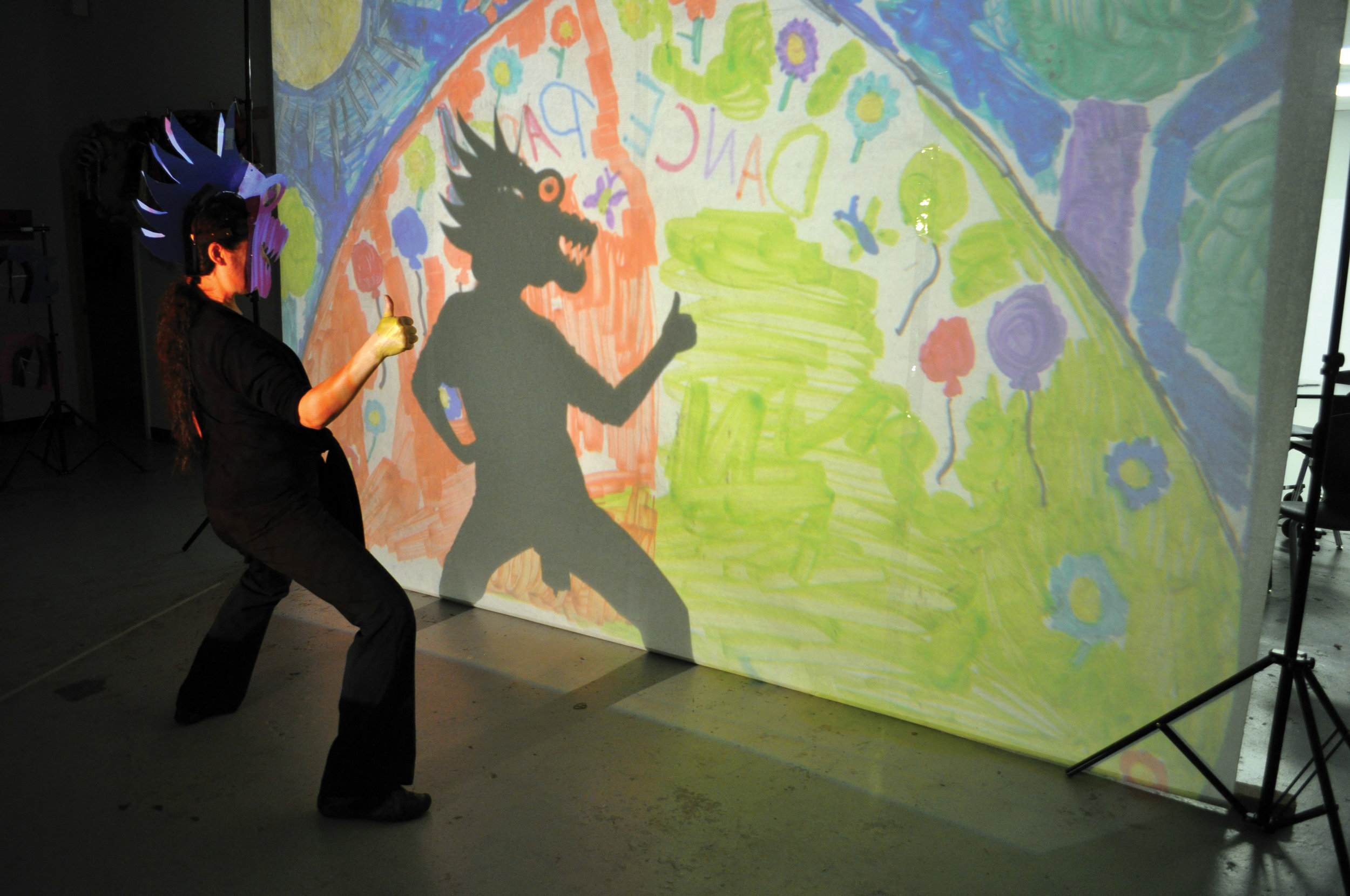Photo courtesy of Toni Shapiro-Phim
Ephemeral Beauty, Lasting Lessons
by Alex Jones
The Philadelphia Folklore Project has been supporting and documenting folk arts and artists in the city’s diverse communities to create social change since 1987.
“We have these long-term collaborations, long-term commitments to [communities] that develop into things depending on what’s needed at the moment,” says Selina Morales, the organization’s director.
One of those longtime community partners, Asian Americans United, collaborated with the Folklore Project to develop its Chinatown Mid-Autumn Festival. When AAU identified the need for a charter school in the Chinatown area, the Folklore Project was there—and 11 years ago, the two groups created Folk Arts-Cultural Treasures Charter School.
FACTS teaches an intentionally multi-ethnic, multi-racial student body drawn from a variety of class backgrounds and areas the city. The school strives to serve immigrant and refugee populations through programs like English language learning as a part of the regular school day.
“The school prioritizes teaching those students in a mixed environment, so [their experience] is not siloed or isolated,” says Morales. “It’s a lesson for everybody. Working with people who speak other languages is a part of our everyday life.”
Students at FACTS also have the opportunity to take lessons in folk and traditional art forms like African diaspora drumming, the Vietnamese zither-type instrument àn tranh, African-American step and Indonesian dance. Morales emphasizes that these arts aren’t necessarily taught for the specific purpose of mastery, but for the lessons inherent in what those art forms have meant for the communities practicing them.
“The first steps of learning about traditional arts are sometimes learning about respect, about ethics, learning [how to] be with other people,” Morales says. “It doesn’t necessarily start with, ‘What does perfection look like?’ It starts with, ‘How do you be with one another, and how do you work together to make something beautiful?’”
Early in the collaboration, the Folklore Project worked with FACTS to develop school-specific rituals. For example, the students say a pledge each morning that includes honoring elders and acknowledging that students have a lot to learn from them.
“We know as folklorists that ritual helps to reinforce community,” Morales says. “How might we take some of those things that are part of community life and put them directly into the school intentionally?”
More recently, the organization and the school have worked together to develop innovative lesson plans around the school’s emphasis on folk arts and its roster of teaching artists and performers.
Each year for about a decade, Philadelphia-based sand mandala artist and lama Losang Samten spends a weeklong residency working with FACTS students. The National Heritage fellow creates an intricate, brilliantly colored design out of sand that represents the cosmos in the Tibetan Buddhist tradition; once it’s completed, the mandala is ritually destroyed to emphasize the transitory nature of life.
“The theme of his presence is really about peace and talking about peace,” Morales said. She asks, “How can we engage the teachers in a discussion about what peace means to their students, from kindergarteners to second-graders to fourth-graders to eighth-graders?”
To ensure that the lessons of Samten’s annual residency grow in value as students progress through grades, the two organizations developed a teacher’s guide to incorporating the sand mandala into lesson plans. The curriculum also includes mini-unit plans specific to each grade taught at FACTS, kindergarten through eighth, so that students are primed to build on last year’s lessons, and there’s always something fresh to be taught and learned when Samten visits each year.
It’s all encapsulated into the K-8 Sand Mandala Curriculum, which was awarded the Dorothy Howard Prize from the American Folklore Society in 2015. The lesson plans are scaffolded so that each grade’s lesson builds on the previous year—examining the artist, his work and the context in which he makes his art. The materials that guide teachers, students and administrative staff are available for free to other schools on the Folklore Project’s website.
“Our hope is that teachers anywhere could bring Losang to their school, and instead of having a school assembly where everyone goes and watches, they’re engaged,” says Morales. “They host him for a week, he does the mandala, and here’s the instructions for every single classroom, including all the resources.”
In addition to supporting teachers and students through this curricula, the aim of these shared materials includes supporting artists like Samten by connecting them with more work; the artist can even provide materials to educator clients himself.
Above and beyond the benefits for educators, students and artists, the Folklore Project works with FACTS on another lofty goal: creating a better Philadelphia by creating better citizens.
“One of the things we say about the school is that our aim is to create citizens in a just world, and that includes having the expectation of justice and having the expectation of fairness,” Morales says. “AAU is this phenomenal social justice organization [that] has spent so much time and fought too many fights with the purpose of continuing to pursue dignity and self-determination in their own communities and others.”



